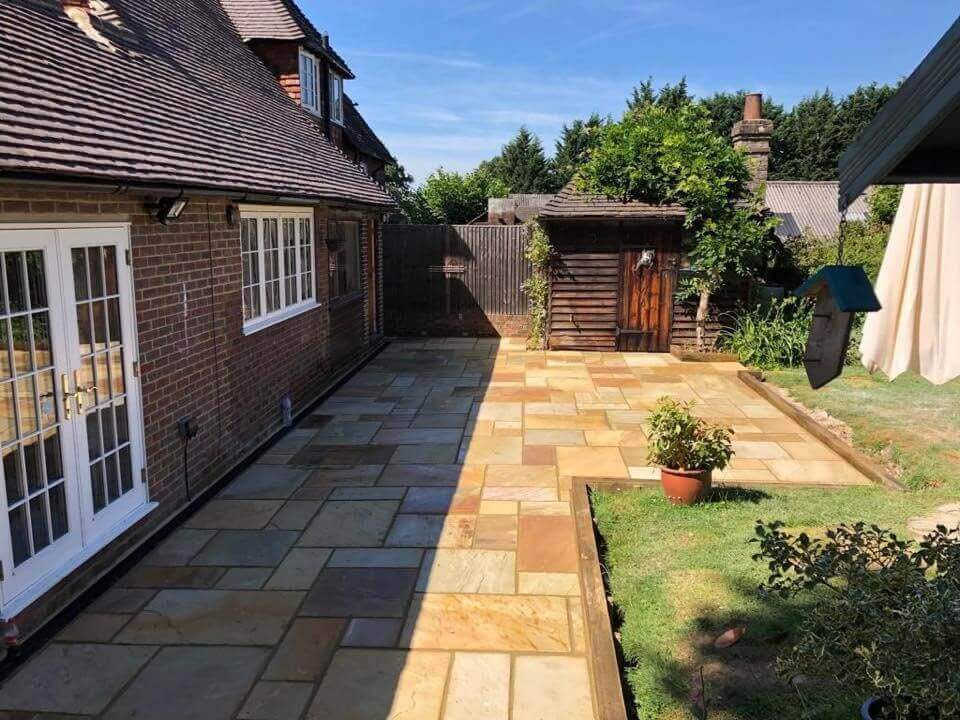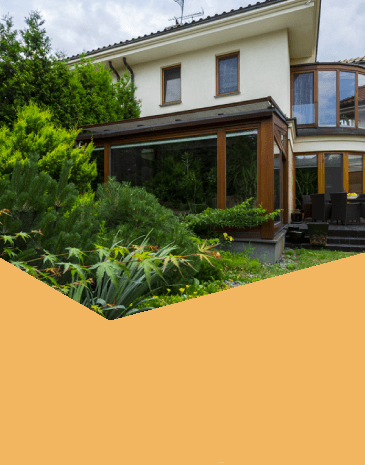

A Patio is an outdoor space generally used for dining or recreation that adjoins a residence and is typically paved.
Construction
Patios are most commonly paved with concrete or stone slabs (also known as paving flags). They can also be created using bricks, block paving, tiles, cobbles, or gravel. Other kinds of patio materials these days include alumawood, aluminum, acrylic, and glass.
Patio options include concrete, stamped concrete, and aggregate concrete. Stamped concrete costs more, is known to be slippery, requires being resealed, and dyes typically fade in time.
Other common patio features include additional reinforcement for hot tubs and additional steps from the home.
Driveways may be decorative in ways that public roads cannot, because of their lighter traffic and the willingness of owners to invest in their construction. Driveways are not resurfaced, snow blown or otherwise maintained by governments. They are generally designed to conform to the architecture of connected houses or other buildings.
Some of the materials that can be used for driveways include concrete, decorative brick, cobblestone, block paving, asphalt, gravel, decomposed granite, and surrounded with grass or other ground-cover plants.
What is the best paving for driveways?
It is always recommended that you use Block Paving on your driveway. Block paving is specifically designed for vehicle overrun and is very durable. We also believe it’s the most attractive option to give your home kerb appeal.
Block Paving
Block paving is one of the most visually appealing materials you can use on your new driveway.
There are dozens of different types of blocks and these can be laid into thousands of different patterns.
Tarmac Driveways
Traditional, simple and affordable. Tarmac had been the material of choice for decades
Gravel and Stones
A gravel driveway is by far the cheapest and quickest to install, especially if the existing driveway sub-base is sound.
PIC Driveways
PIC stands for pattern imprinted concrete and this type of driveway is becoming more and more popular.
You can choose from hundreds of patterns and colours for a truly unique driveway.
Make it decorative and add character to your driveway, patio, or sidewalk
CONCRETE, THE EASY CHOICE
Decorative concrete delivers advantages and value in a number of ways. With the wide array of colors and textures to choose from the owner is virtually limited only by his or her imagination. There are also options regarding the method used to obtain your pavement enhancements. A brief list of those options is provided below.
Integrally Colored Concrete – In this option the color of the concrete is distributed completely through the material. If the surface of the material is scarred or chipped the color of the concrete is still visible. The concerns of the past regarding fading and batch to batch consistency have been mitigated by the advent of today’s new color admixtures.
Textured Finishes – The look of concrete may also be changed by texturing it’s surface. The texturing may be achieved through the use of chemicals or by sandblasting. These methods offer a variety of textures and provide the user with greater control over the amount of exposure and increased uniformity in appearance. Exposed aggregate concrete is an example of this technique. With an exposed aggregate finish the color of the concrete may be controlled to match or contrast with the type of aggregate in it. The slip resistant finish produced through exposing the aggregate allows for greater security for pedestrians in the case of inclement weather.
Stamped Concrete – Using this method the concrete surface can be made to replicate the pattern and texture of brick, slate, flagstone, cobblestone, stone, and even wood. The color is typically produced through the use of some type of shake on powder. These shake on colors produce concrete with an extremely hard, mar resistant surface. The advantage offered by stamping can be found in the savings realized during the installation process (as compared to laying brick or stone) and the long term performance of the pavement.
Stenciling/Staining – These processes provide yet another avenue for the owner to consider to spice up the project. Stenciling involves masking off an area of the concrete and sand blasting, coloring, or etching the exposed area to produce a finish that leaves a pattern or faux finish. Stains, which penetrate to pavement surface, may be applied to produce a unique mottled finish to the surface of the concrete.
Are you currently working on a project that could benefit by using concrete? Perhaps the better question is what project wouldn’t benefit from using concrete?